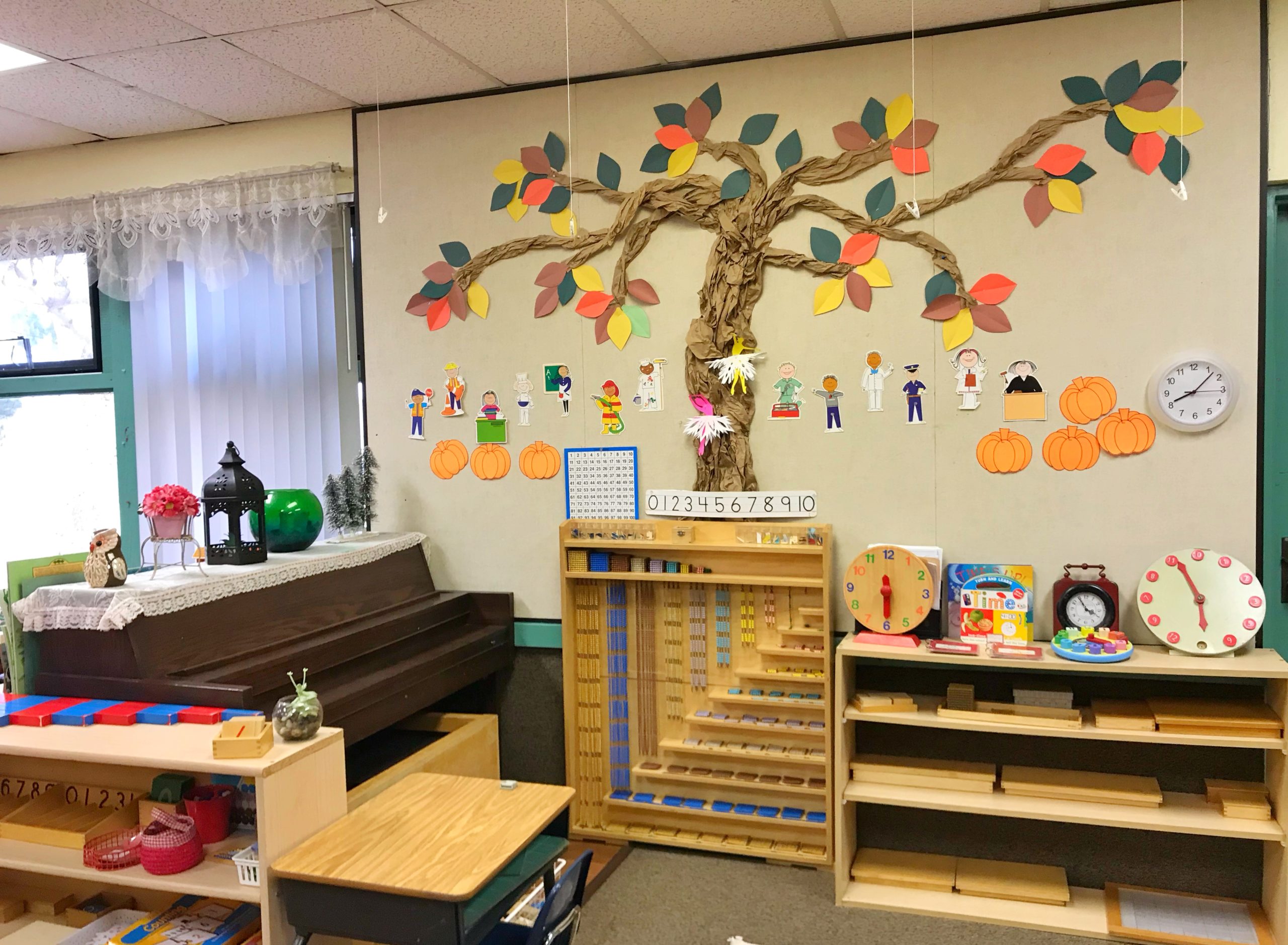
The Sensorial Area consists of materials that educate and refine the child’s senses.
The child learns to recognize similarities and differences; to discriminate between similar objects; to grade similar objects. This is important for later mastery of tasks involving math and language. The primary purpose of the Sensorial exercises is not that their correct usage be mastered, but rather that ” the child train himself to observe; that he be led to make comparisons between objects, to form judgments, to reason and to decide.”
Qualities discriminated with the visual sense are size, shape, and color; with the tactile sense, texture, temperature, and pressure; with the auditory sense, intensity, and pitch. Basic taste sensations of sweet, sour, bitter, and salty are discriminated with the gustatory sense; various odors-fragrances are used to discriminate the olfactory sense. Montessori included the stereognosis sense with which the child discriminates using non-visual tactile-muscular activity.
The Sensorial Materials are designed to simplify learning and awareness of the environment by:
(1) isolating the difficulty or quality to be discriminated
(2) isolating the senses
(3) encouraging mastery through repetition
(4) possessing self-correction
(5) presenting an attractive appearance to the child
By working with the Sensorial Materials, children develop the organization and patterning skills inherent in math and language concepts which build upon the sensory awareness stimulated by the Sensorial Materials.
The theory behind the Sensorial Area brings order and system into the impressions of the child’s higher mental life. The Sensorial Materials make use of the principles of the “isolation of stimulus” and attribute to form a sure and broad foundation for the child. The real and inward preparation of the objects leads a child to study such qualities as length, breadth, height, colour, texture, weight, size, and so forth.
The Sensorial Materials are designed to help the child’s mind to focus on a particular quality. The “intangible essences” of the objects helps to build up and store abstract ideas in the child’s mind. The origin of abstract ideas according to Aristotle is the formation of ideas accompanied by a gradual elimination of matter. The process of abstraction depends on two factors which both must be present: the absolute clarity in the concrete and the child must have reached a certain maturity of mind.
The materials prepared for the Sensorial Area are not to teach something but to assist the mind’s development. The child’s mind must first learn to operate in the concrete thought before it can form in the abstract performance. The function is to bring order into the impressions he has already received, not to present new ideas.
The child train himself to observe and to make comparisons, not to perform. exercises perfectly but to form judgment, to reason and decide. Sensorial activities prepare the child for left to right eye movements, visual discrimination, eye and hand coordination, strengthens grip, and increase of vocabulary which indirectly prepares for reading and writing in the language area. Indirect preparation for math includes discrimination of the mathematical mind and mathematical material relationships.
The technique used in sensorial exercises prepares a child with sufficient accuracy, gives an impression of movement stored in the muscular sense, teaches him to make “systematic” distinctions, gradations, contrasts, and identities.
Sensorial objects provide a basis for learning an orderly manner needed for neurological and psychological development as well as a refinement for concentration, observation, attention, and cognitive skills.
Grace Gallardo
Introduction to Sensorial Course II
February 4, 2005




